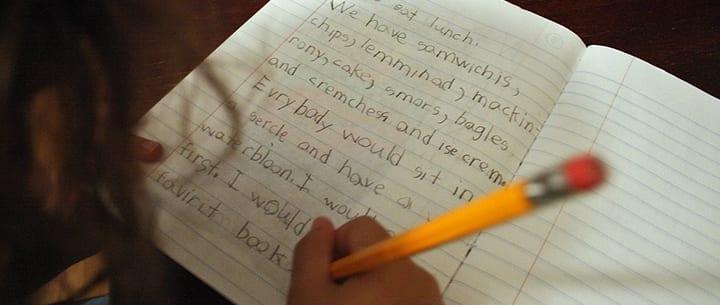 A good story needs to be strong from the first line through the final page. It’s all too easy to start strong with a great hook and an interesting set of characters, but then lose momentum along the way and stop short at the end. This can be tough for budding wordsmiths of all ages – so how can you encourage your kids and help them understand the writing techniques involved? Here are some tips for parents and private writing tutors alike…
A good story needs to be strong from the first line through the final page. It’s all too easy to start strong with a great hook and an interesting set of characters, but then lose momentum along the way and stop short at the end. This can be tough for budding wordsmiths of all ages – so how can you encourage your kids and help them understand the writing techniques involved? Here are some tips for parents and private writing tutors alike…
- Read and discuss great literature
As a parent or tutor, you can introduce children to excellent literature selections by reading aloud together. When you finish a book, talk about the ending. What made it a good or bad ending? Encourage students to share the reasons that they did or did not like the end of the book.
Another great exercise that you can do is to examine the first and last lines in stories together. Talk about the common language that the author uses to tie them together, and how your child can incorporate that into the story that he or she is working on.
-
Make an outline before starting the writing process
It won’t be as difficult to write the ending of the story if you have a good idea of how it will go before you get there. Writing graphic organizers can help, and these are easy to find online. Try working together on the organizational process for the first time, so your child can get the hang of it.
-
Talk about making readers feel something
When readers get sucked into the lives of the characters, they care about what happens at the end of the story. They want to know whether everything works out and how it happens. Ask your young writer: What kind of words can you use to make your ending have an emotional impact?
What are Some Different Types of Story Endings?
-
Explicit: An explicit ending wraps up all of the loose ends. Typically this ending is happy and satisfying, although it can be unhappy.
-
Implicit: An implicit ending is open to interpretation. The reader must fill in the blanks about what will happen to the characters.
-
Unresolved: Unresolved endings are similar to implicit endings. The reader is left wondering what will happen because the main conflict does not wrap up at the end of the story.
-
Twist: A twist ending is unexpected. The reader cannot anticipate what will happen. It is important to write a twist ending in such a way that the reader is still satisfied and does not feel cheated.
-
Tie-back: A tie-back ending relates directly to something that happens at the very beginning of the story or uses elements from both the beginning and middle of the story. After you read a tie-back story, identify the elements of the story that come back into play during the ending.
What are Some Writing Tips for Kids Who Are Still Struggling?
As a tutor, your lesson plan should include writing tips for kids who get frustrated easily. Some kids may struggle more than others, so maintaining your patience – and trying out different approaches – is key.
Stay positive
Sometimes when students are unsure what to do next, they simply quit moving forward because they are afraid of making a mistake. Even if you have explained a concept or task clearly, some kids may need to hear it two or three more times. Work together, offer encouragement, and show how you would approach the situation.
-
Encourage authenticity
As a parent, urge your kids to make their stories personal and genuine whenever possible. It can be easy for students to get caught up in the endings from favorite books and not think about how they will make their stories original. Tell your son or daughter that you value his or her ideas and that you want to know how he or she would end a story, not how someone else would end it.
-
Break down the tasks and provide checklists for each step
The writing process can be overwhelming for students of all ages and writing levels, so it may be helpful to break down each step. For example, you could provide a checklist – such as the steps to take when editing a story – to help them stay on track.
-
Provide fun materials
Letting kids use a special pen or marker or write on a new kind of paper can make the writing process much more fun! For example, provide red gel pens for editing or print the graphic organizers on colored paper.
-
Act out the stories
There is nothing quite like having a story come to life before your eyes! As your child wraps up his or her story, consider acting it out as a play. You can create scenery and props together, and then perform it for family and friends!
-
Publish the stories
Students love to see their writing published in a book. When students finish writing stories, bind the final written or typed draft in a personal book or in a collection with stories from the entire class. Depending on the age of the students, they can take ownership of the publishing process to personalize the final version.
With these writing tips for kids, you can help your child go from struggling student to budding wordsmith. Have fun, and keep encouraging them to write!
Photo by woodleywonderworks
Megan L.

